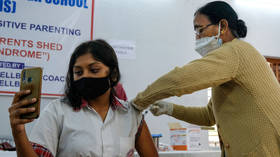G20 digital health agenda can be India’s gift to the Global South

The Covid-19 Pandemic ushered in a new reality for the world – digital healthcare. Often pegged as technology of the future, it started becoming the present face of healthcare during the new era of social distancing. It also became abundantly clear that irrespective of global contexts, digital healthcare will eventually become a significant enabler in achieving Universal Health Coverage (UHC), by ensuring that a full spectrum of essential, timely, and high-quality health services is accessed by increasingly more people, while reducing the financial burden on patients.
India’s digital healthcare leap during Covid-19
India’s digital prowess and crucial role in the global technological revolution across multiple sectors is well-known across the world. But it was during the Covid-19 pandemic that the role of digital tools in healthcare offered a strong test case and strengthened the pandemic response in India.
In the new era of social distancing, India leveraged digital health tools to enable contactless healthcare and continued delivering emergency care alongside managing other pandemic challenges. For instance, the Aarogya Setu contact tracing app boosted efforts to limit the virus spread and the CoWIN vaccination portal was instrumental in vaccinating citizens, helping deliver over 2 billion jabs. The power of this platform started from managing logistics, then inventory, and finally to registering the entire vaccination system. It became the digital backbone of a gargantuan process of vaccinating all adults and many children, on a scale never before attempted.
As the country realized the potential of this platform, it was offered to many other nations worldwide. This became yet another testimony to India’s prowess for building successful digital public goods (DPGs). The spectacular success of CoWIN was neither the first, nor the last time India would build a DPG.
Pro-Covid digital revolution
The digital revolution had already been transforming Indian lives before the pandemic. Our unique digital public infrastructure (DPI) comprised DPGs such as Aadhaar (a voluntary biometric-based digital ID), the Unified Payments Interface (UPI, an instant payment system) and the JAM trinity (short for Jam Dhan-Aadhar-Mobile, a system designed to eliminate intermediaries and leakages in the transfer of government subsidies to intended beneficiaries). Additional products based on these structures include the eKYC verification service, DigiLocker cloud document storage, the eSign electronic signature service, the Consent Artefact personal data protection scheme and eRUPI cashless payment vouchers. Collectively known as India Stack, they were already playing a pivotal role in our service delivery systems by keeping all important documents safe online, enabling service providers to verify customers and obtain their consent to make online payments. Many countries are in the process of replicating these tools.
Along the same lines, the National Health Stack was launched, which is a set of digital infrastructures and services envisaging the creation of common public goods exclusively for healthcare. This led to the development of the National Digital Health Blueprint which laid out the architectural framework for a comprehensive, nationwide digital health ecosystem.
Based on the vision of these policies and a resolve to bring all stakeholders together and create a backbone necessary to support the integrated digital health infrastructure of the country, India launched the Ayushman Bharat Digital Mission (ABDM) in September 2021. This initiative aims to redefine the future of public health in the country leading to a paradigm shift in the way we think and work towards digital health inclusion and Universal Health Coverage (UHC).
In fact, the digital healthcare sector is on the cusp of disruptive innovation. Using information, communication and technology, the ABDM is developing building blocks and verified registries so that public or private health providers, health-tech firms and patients can participate, transact and avail themselves of quality healthcare services through digital. Alongside ensuring easy access, the platforms will make healthcare affordable as well.
The current state of India’s evolving digital healthcare
The digital healthcare architecture, systems and services under the ABDM are population-scaled, interoperable, frugal and robust. They address privacy and security issues, and, most importantly, are open-source and open-standards-based, which means they are easily replicable. Open protocols enable interoperability and exchange of health data and services over a decentralized network, making basic digital healthcare services available to everyone, everywhere.
There are three broad pillars on which ABDM is based. The first is the Ayushman Bharat Health Account (ABHA), a randomly generated 14-digit identification code, which works as the common identifier for citizens and authenticates them across healthcare providers. The associated Personal Health Record (PHR) app allows citizens to thread their health records to ABHA and securely store them with their consent. Patients have the autonomy to share specific or all records with their healthcare providers while seeking services. This also helps doctors better diagnose and treat patients as they have access to their entire medical history and records in one place.
One area where ABHA and PHR have found a massive uptake is Scan and Share. This modality helps manage queues at hospital counters and speeds up outpatient registration processes in large hospitals using a QR-code-based token system. The ABDM ecosystem already has 300 million ABHA and 100 million linked records, while Scan and Share is operational in more than 250 large government hospitals across India – all this within two years of launch.
The ABDM system’s second pillar is building a single repository of authenticated healthcare providers and facilities and connecting them to a central digital ecosystem. Public and private health facilities and health professionals, once onboarded to the platform, have a stronger online presence and increased discoverability.
For the third pillar, ABDM is launching the Unified Health Interface (UHI) to democratize healthcare. This allows all healthcare service providers and applications used by citizens to communicate with one another across its network. It offers users a smooth experience because they can take advantage of a variety of services, arrange lab sample collection, book in-person or virtual consultations with doctors, and more. This seamless transaction means it will solve a major issue people face today – when their records are locked in one system that is not compatible with another.
With the implementation of these building blocks, the next step is to digitize and automate the insurance claim settlement process through the Health Claim Exchange platform. This aims to make claim processing inexpensive, transparent and real-time. Finally, through the Heal by India program, there is a strong intention to establish an international presence by opening up the services of Indian healthcare providers to the rest of the globe. Our digital health initiatives, through indigenous, asset-light innovation, interoperable core frameworks and a strong reliance on public engagement, are meant to cater to 1.4 billion citizens – that’s more than a seventh of humanity.
What India can offer in G20’s digital health agenda
As India presides over the G2O this year, deliberations will include a Global Initiative on digital health and focus on building an institutional framework for an inter-linked health ecosystem for the world. As we collectively build that ecosystem, several lessons from India's experience of digital public infrastructure for universal healthcare using DPGs can be adapted and replicated.
The G20 is a fitting platform to imagine and build a global digital health architecture that can serve not only the developed countries but more importantly the Global South, which have suffered disproportionately during the Covid-19 pandemic. After all, the beauty of innovation is realized only when it reaches the people who need it the most.
The statements, views and opinions expressed in this column are solely those of the author and do not necessarily represent those of RT.















